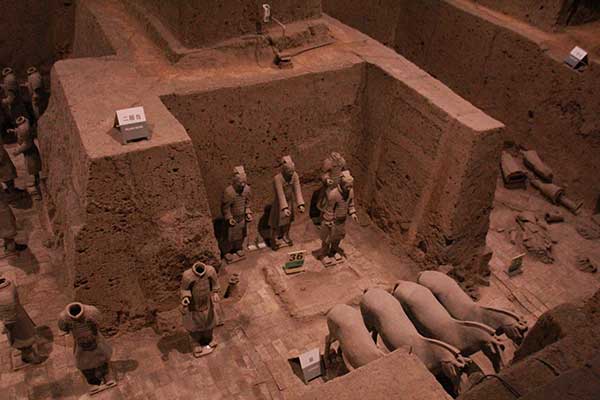An army from the Qin Dynasty
 |
|
Terracotta warriors and horses in Pit 2 in the Emperor Qinshihuang's Mausoleum Park, April 1, 2016.[Photo by Li Hongrui/chinadaily.com.cn] |
But they are terracotta, funeral objects of Qin Shihuang’s tomb. Discovered in 1974 near Xi’an, the site is one of the most important archaeological discoveries of the 20th century.
Five years after the discovery, the Terracotta Warriors and Horses Museum was opened. The museum features more than 7,000 terracotta soldiers, chariots and horses that were discovered in the pits. And it was listed as a WorldCultural Heritage site by UNESCO in 1987.
In ancient China before the Qin Dynasty, humans were traditionally buried with slave owners and emperors. Later, the tradition was banned and ceramic figures instead of humans were used as funeral objects. The terracotta army is an example of that change.
- Qinshihuang Mausoleum Museum: Protection and progress
- Possible 'arms dump' unearthed in Mausoleum of Qinshihuang
- China's terracotta warriors exhibited at Chicago's Field Museum
- Terracotta warriors embarks on a one-year tour to Japan
- Terracotta warriors wrapped in cling film
- Terracotta Warriors to greet Chinese New Year in Sydney














